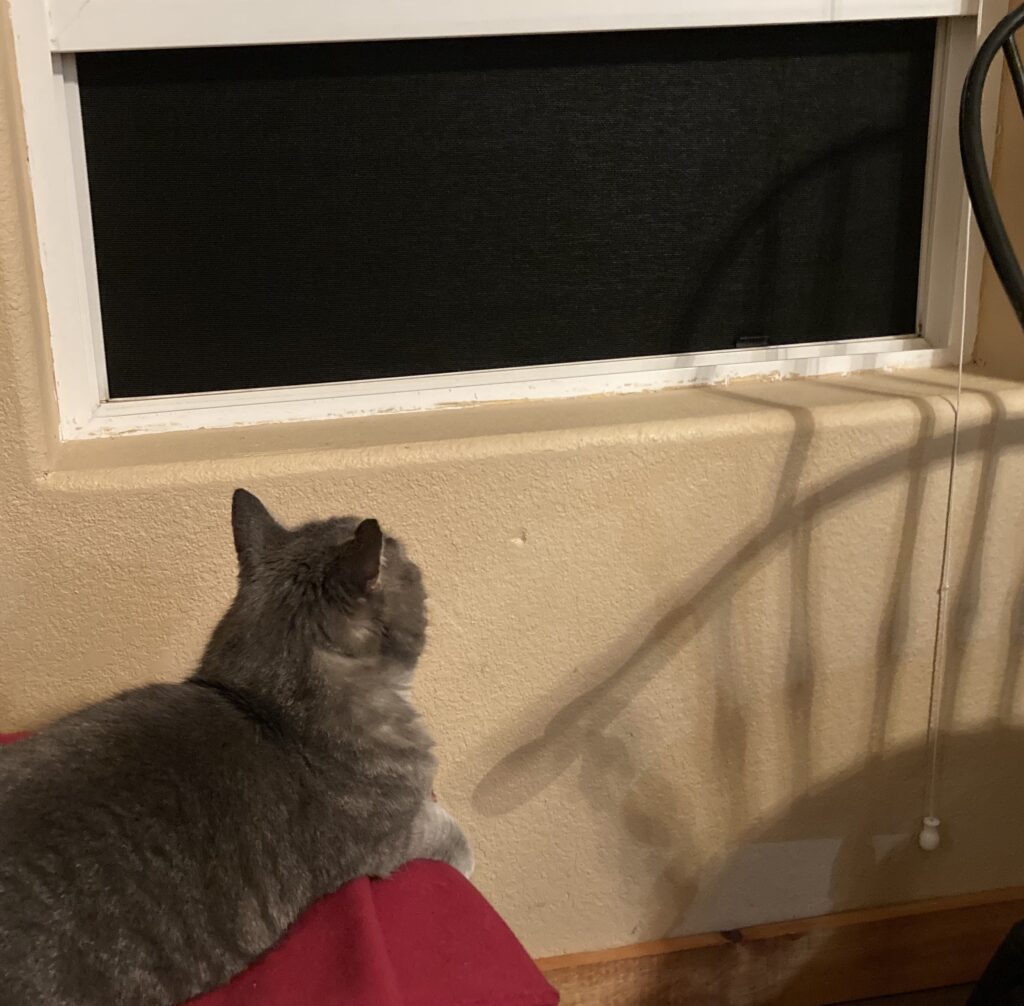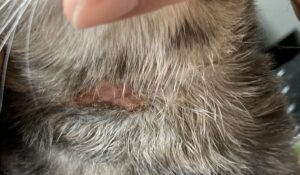
I remember visiting the zoo as a young child. Back then, the animals’ enclosures were not the large, landscaped areas that you see today. The animals were behind iron bars with a few hides to go into, water, and maybe a tree or two. It was not uncommon to see the tigers or lions pacing repetitively back and forth along the walls of their enclosures or the giraffes continually licking the chain link fences.
These repetitive behaviors are referred to as ARB’s, abnormal repetitive behaviors. In the past few decades, zoos have found that changing captive animals’ environments to allow more natural behaviors reduces ARB’s significantly. Expressing species-specific behaviors allows an animal to control and modify its environment, ensuring survival and reproductive success. Creating a den (safe place) is an example of how an animal controls and modifies its environment (Reference 1).
Environment and cat behavior
Many cats live predominately indoor lives. Our homes are quite different than the territory of a wild cat. The indoor cat often has little opportunity to engage in typical cat behaviors such as hunting and climbing trees. It is not surprising that some domestic cats indulge in ARB’s to reduce the stress of being unable to predict and control their environment. Overgrooming, where a cat licks or scratches her fur so much that the area becomes inflamed and bald, is one of the more common ARB’s shown by domestic cats.
Of course, a good, solid medical workup may uncover a cause for overgrooming and itchiness – perhaps kitty has a food allergy or skin infection. But it is not uncommon for some of these cases to be “idiopathic”, meaning we don’t know what the cause is.
environment and cat behavior: ARB’s

A study published in 2018 (Reference 2) investigated the link between the environment and cat behavior. The study followed thirteen cats who had been diagnosed with Idiopathic Ulcerative Dermatitis (IUD). IUD presents as a crusted, non-healing ulcer on the neck, head or between the shoulders. Medical therapy including surgical excision is rarely successful. The cat scratches at the wound frequently; the wound will heal if the cat cannot scratch it, say if she wears a collar or bandage. Once the collar or bandage is removed, the cat will scratch the area again and the wound reappears. (Reference 2)
The research team asked the owners of the 13 cats to institute the following environmental changes:
- Leave closets open to allow cats to use them as a hideout
- Free access to food and water (add a fountain if the cat prefers running water)
- Free access to a garden or balcony/window – a cat door was recommended
- Provide access to a secure area where each cat can sleep, eat, use the litter box without competing with other cats (some cats were separated from their house mates)
- Regularly offer new toys to the cat
- Stop interactions initiated by owner such as carrying the cat, petting the cat. Allow the cat to initiate the interaction.
As soon as environmental changes were set up, the ARB of scratching stopped within 2 days. All cats except one healed – for this cat, the owners were not able make the environmental changes. Oral medication was given to this kitty for two months but the neck wound did not heal. The other twelve cats did not receive medication. The research team followed these cats for two years and no relapses were noted in that time.
The environmental remedies in this study aimed to give the cat control over her environment by allowing her to exercise typical “cat” behaviors. These are in line with the AAFP* recommendations for a healthy feline environment (Reference 3):
- Provide a safe place <> leave closets open to allow the cats to use them as a hideout
- Provide multiple and separated key environmental resources<>secure area for eating, sleeping and using litter box
- Provide opportunity for play and predatory behavior <> offering new toys to the cat
- Provide positive, consistent and predictable human–cat social interaction <> emphasize interactions initiated by the cat
- Provide an environment that respects the cat’s sense of smell <> access to a garden/balcony/window exposes the cat to outdoor scents and smells
Although our cats are a domestic species and have lived alongside humans for over 10,000 years, life in our homes sometimes reduces their opportunity to express behaviors typical of their wild relations. The environment and cat behavior are intertwined. Improving the cat’s environment to encourage species-specific behaviors can reduce a cat’s stress and, in some cases, cure disease.
Note: I don’t agree with free-feeding cats even in such a situation – I think it is better to meal feed and use feeding as a positive interaction with humans. Using food puzzles and tossing kibble for the cat to hunt down allows cats opportunities to engage in foraging and hunting behaviors.
* American Association of Feline Practitioners
references
- Joseph P. Garner, “Stereotypies and Other Abnormal Repetitive Behaviors: Potential Impact on Validity, Reliability, and Replicability of Scientific Outcomes”, ILAR Journal, Volume 46, Issue 2, 2005, Pages 106–117, https://doi.org/10.1093/ilar.46.2.106
- “From Feline Idiopathic Ulcerative Dermatitis to Feline Behavioral Ulcerative Dermatitis: Grooming Repetitive Behaviors Indicators of Poor Welfare in Cats”, Titeux Emmanuelle, Gilbert Caroline, Briand Amaury, Cochet-Faivre Noëlle. Front. Vet. Sci., 16 April 2018 Sec. Veterinary Dermatology and Allergy Volume 5 – 2018 | https://doi.org/10.3389/fvets.2018.00081
- Ellis SLH, Rodan I, Carney HC, et al. AAFP and ISFM Feline Environmental Needs Guidelines. Journal of Feline Medicine and Surgery. 2013;15(3):219-230. doi:10.1177/1098612X13477537

